History and Biblical SignificanceSardis (also spelled Sardes), was an ancient city of Asia Minor (today Turkey), in the 7th century B.C. the capital city of the Kingdom of Lydia. Sardis was known for its crafts and artistry, and as the first city where silver and gold coins were minted. Sardis was taken by the Persians about 546 B.C., and then later in turn by the Athenians, Seleucids and the Attalids. When the Romans took it in 133 B.C., it became the capital of the Roman province of Lydia. The city was severely damaged by an earthquake in 17 A.D., and although the Romans reportedly spent 10,000,000 sesterces for damage repair, the city never fully recovered its former glory. Sardis was located in the Hermus Valley, near the major road system that linked it with Ephesus, Smyrna, Pergamum, Thyatira, Philadelphia and Laodicea - where the Seven Churches of Revelation were located. Here is what Jesus Christ gave to The Apostle John to write about the church in Sardis: "And to the angel of the church in Sardis write: 'The words of Him who has the seven spirits of God and the seven stars. 'I know your works; you have the name of being alive, and you are dead. Awake, and strengthen what remains and is on the point of death, for I have not found your works perfect in the sight of My God. Remember then what you received and heard; keep that, and repent. If you will not awake, I will come like a thief, and you will not know at what hour I will come upon you.' 'Yet you have still a few names in Sardis, people who have not soiled their garments; and they shall walk with Me in white, for they are worthy. He who conquers shall be clad thus in white garments, and I will not blot his name out of the book of life; I will confess his name before My Father and before His angels. He who has an ear, let him hear what the Spirit says to the churches." (Revelation 3:1-6 RSV ) |
 At Sardis we first saw an area of Byzantine shops.
At Sardis we first saw an area of Byzantine shops.
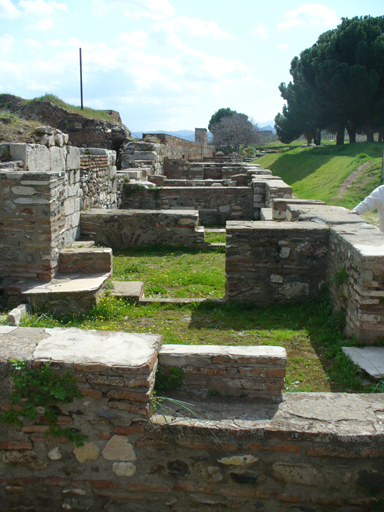 .
.
 One of the shops had a basin with crosses carved into it.
One of the shops had a basin with crosses carved into it.
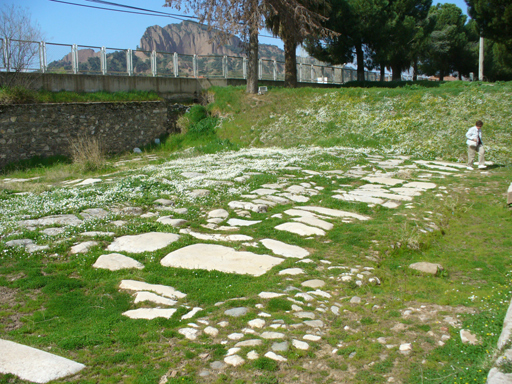 The remains of a marble Roman street.
The remains of a marble Roman street.
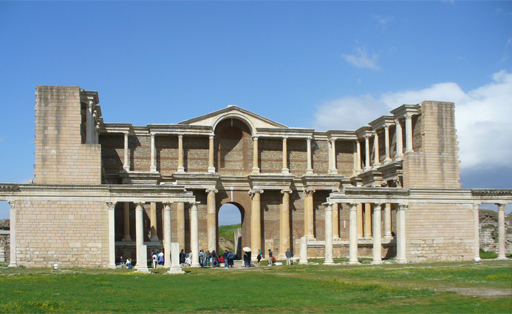 A large bath-gymnasium complex, probably completed about the middle of the second century AD.
A large bath-gymnasium complex, probably completed about the middle of the second century AD.
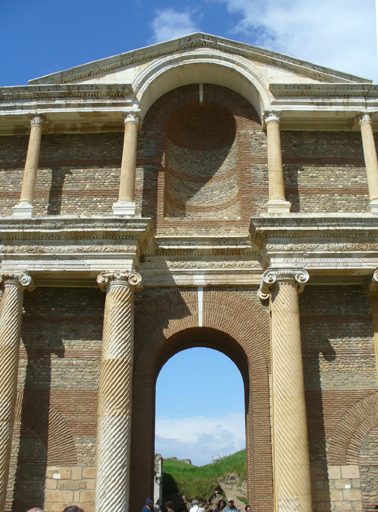 Some closeups of this building.
Some closeups of this building.
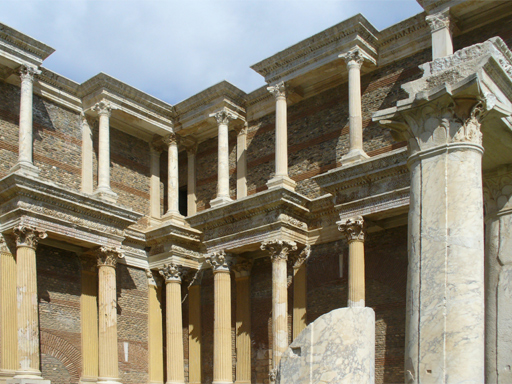
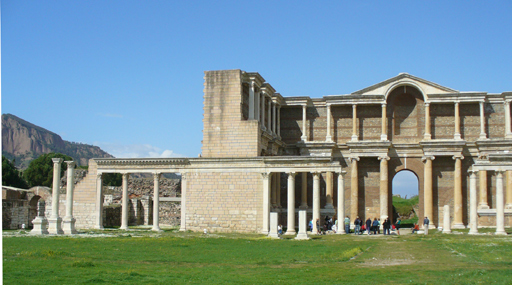 At the left end of the gymnasium is another building which first built to be dressing rooms or lecture halls. It was redesigned in the 2nd century as a large hall, perhaps intended to be used as a Roman civil court. Later in the 3rd century, this hall was turned over to the Jewish community at Sardis and renovated as a synagogue.
At the left end of the gymnasium is another building which first built to be dressing rooms or lecture halls. It was redesigned in the 2nd century as a large hall, perhaps intended to be used as a Roman civil court. Later in the 3rd century, this hall was turned over to the Jewish community at Sardis and renovated as a synagogue.
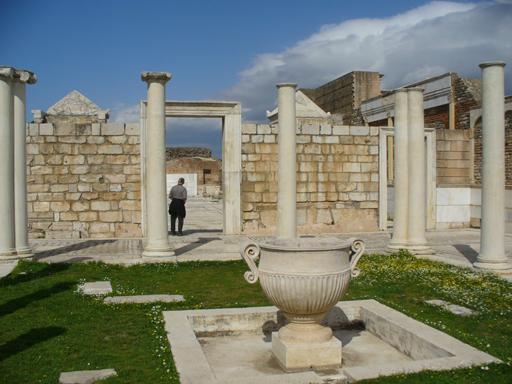 This was the forecourt into the synagogue.
This was the forecourt into the synagogue.
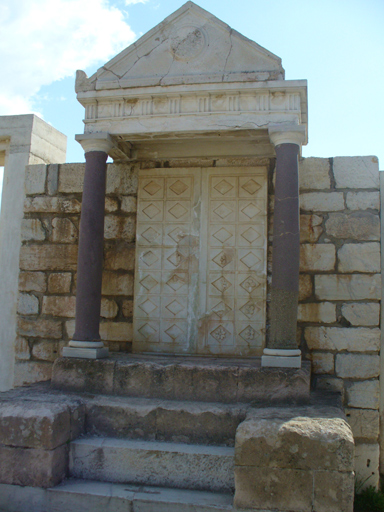 A shrine which held the Torah in the synagogue.
A shrine which held the Torah in the synagogue.
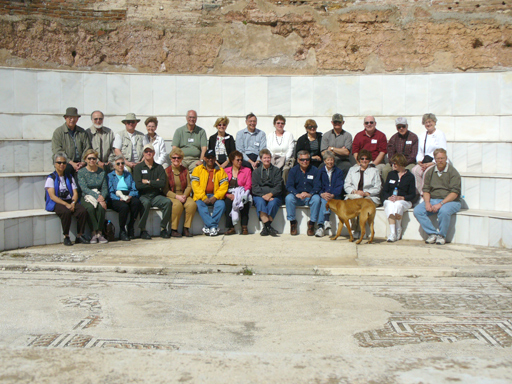 The synagogue was about 200 feet long and 60 feet wide. At the far end in the apse were marble benches which may have been used by the elders. Today it is also occupied by the elders (or the elderly)-the members of our tour!
The synagogue was about 200 feet long and 60 feet wide. At the far end in the apse were marble benches which may have been used by the elders. Today it is also occupied by the elders (or the elderly)-the members of our tour!
 Note the mosaic on the floor in the previous picture. Here is more detail.
Note the mosaic on the floor in the previous picture. Here is more detail.
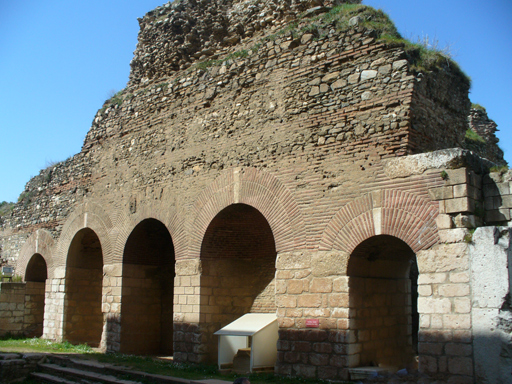 A few shots of the Roman baths in the rear of this complex.
A few shots of the Roman baths in the rear of this complex.
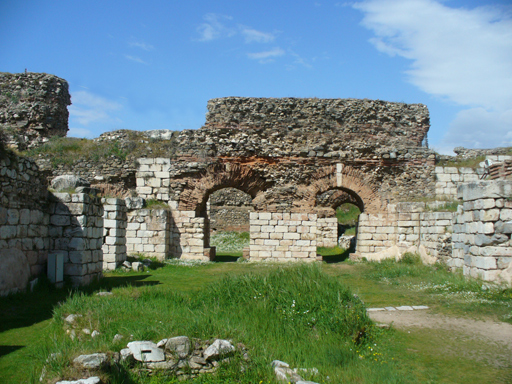
Our next stop is Thyatira.
